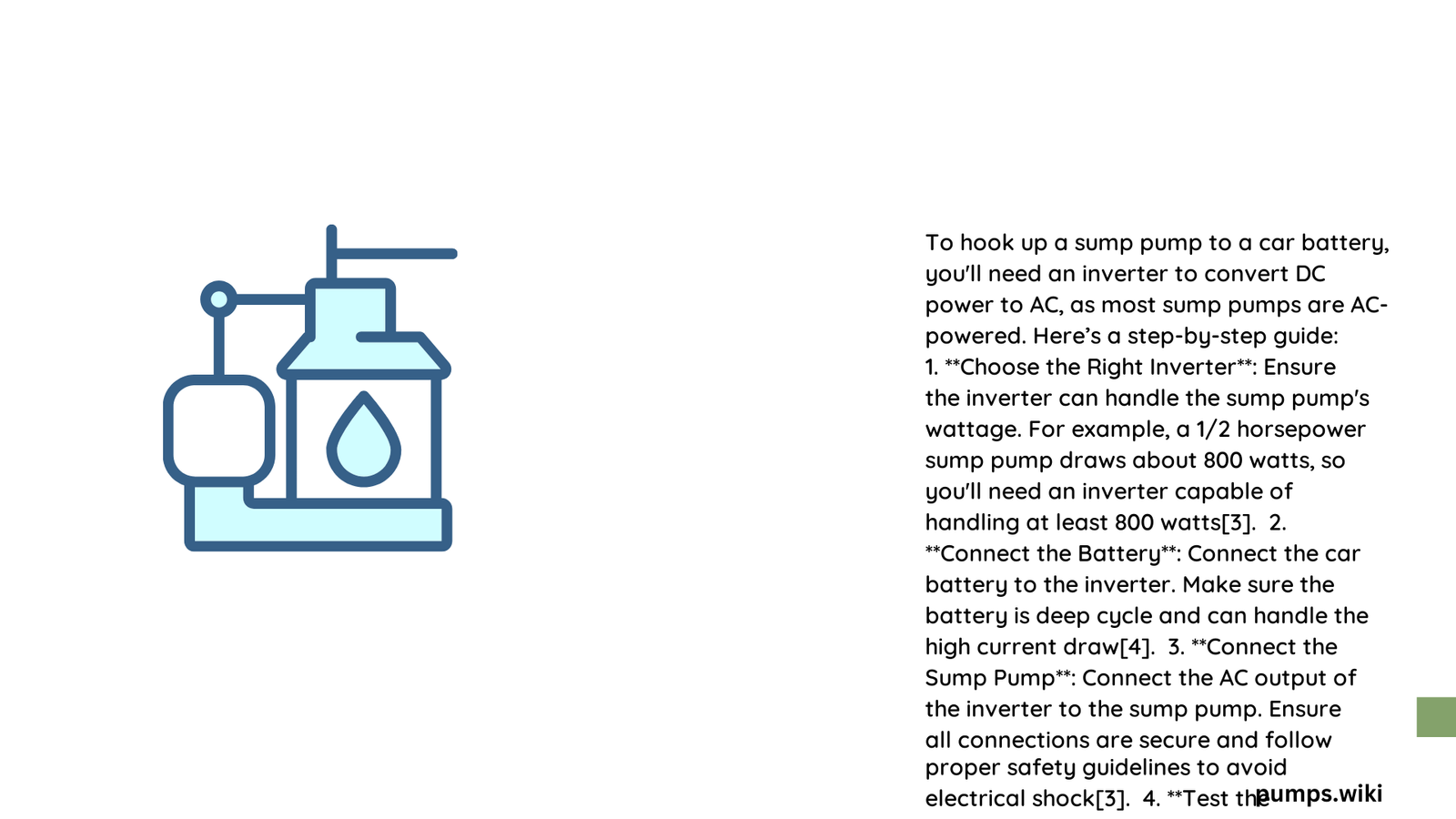When power fails during heavy storms, a car battery-powered sump pump can be your home’s critical defense against flooding. Connecting a sump pump to a car battery requires precise electrical knowledge, proper tools, and careful installation to ensure reliable water removal during emergencies. Homeowners can successfully create a robust backup system by understanding the correct wiring techniques, battery selection, and safety protocols.
Why Connect a Sump Pump to Car Battery?
Sump pump backup systems provide crucial protection against basement flooding when electrical power fails. A car battery offers a reliable, portable power source that can keep your basement dry during critical moments.
What Tools Do You Need?
| Tool | Purpose | Recommended Type |
|---|---|---|
| Adjustable Wrench | Tightening Connections | 8-10 inch |
| Wire Strippers | Preparing Electrical Connections | Adjustable |
| Multimeter | Checking Voltage | Digital |
| Battery Clamps | Secure Battery Connection | Heavy-Duty Copper |
How to Select the Right Battery?

Battery Specifications for Sump Pump Backup
- Voltage: 12V deep-cycle battery
- Capacity: 100-200 Ah recommended
- Type: Sealed lead-acid or AGM battery
- Recommended Brands:
- Optima
- Interstate
- VMAX
Step-by-Step Connection Process
How to Prepare Battery and Pump?
- Inspect Battery
- Check battery terminals for corrosion
- Ensure battery is fully charged
-
Verify battery health with multimeter
-
Gather Electrical Components
- 10-12 AWG copper wire
- Battery terminal connectors
- Heat shrink tubing
- Electrical tape
- 15-20 amp inline fuse
How to Wire the Connection?
Wiring Steps
- Connect positive (red) wire to positive battery terminal
- Connect negative (black) wire to negative battery terminal
- Install inline fuse on positive wire
- Secure all connections with heat shrink tubing
- Use battery clamps for secure attachment
Safety Precautions
What Risks Should You Mitigate?
- Electrical Hazards
- Always disconnect battery before working
- Wear protective gloves
-
Work in well-ventilated area
-
Battery Maintenance
- Check water levels (if applicable)
- Clean terminals quarterly
- Store in cool, dry location
Troubleshooting Common Issues
What If Pump Doesn’t Work?
- Check battery voltage
- Inspect wire connections
- Test fuse integrity
- Verify pump functionality
- Consult professional if problems persist
Estimated Installation Time and Cost
| Component | Estimated Cost | Installation Time |
|---|---|---|
| Battery | $100-$250 | N/A |
| Wiring Kit | $30-$50 | 1-2 hours |
| Professional Installation | $200-$500 | 2-3 hours |
Maintenance Recommendations
- Test backup system quarterly
- Replace battery every 3-5 years
- Clean battery terminals annually
- Keep backup system documentation accessible
Pro Tip: Consider a professional installation if you’re uncomfortable with electrical work.
Final Recommendations
Connecting a sump pump to a car battery requires technical skill and careful preparation. While DIY is possible, consulting a professional ensures optimal performance and safety.
Potential Cost Savings
- Prevent basement flood damage ($10,000+ potential savings)
- Avoid water restoration expenses
- Protect valuable belongings
Reference:
– Basement Watchdog Manual
– Sump Pump Direct Guidelines
– Battery Backup System Manual
